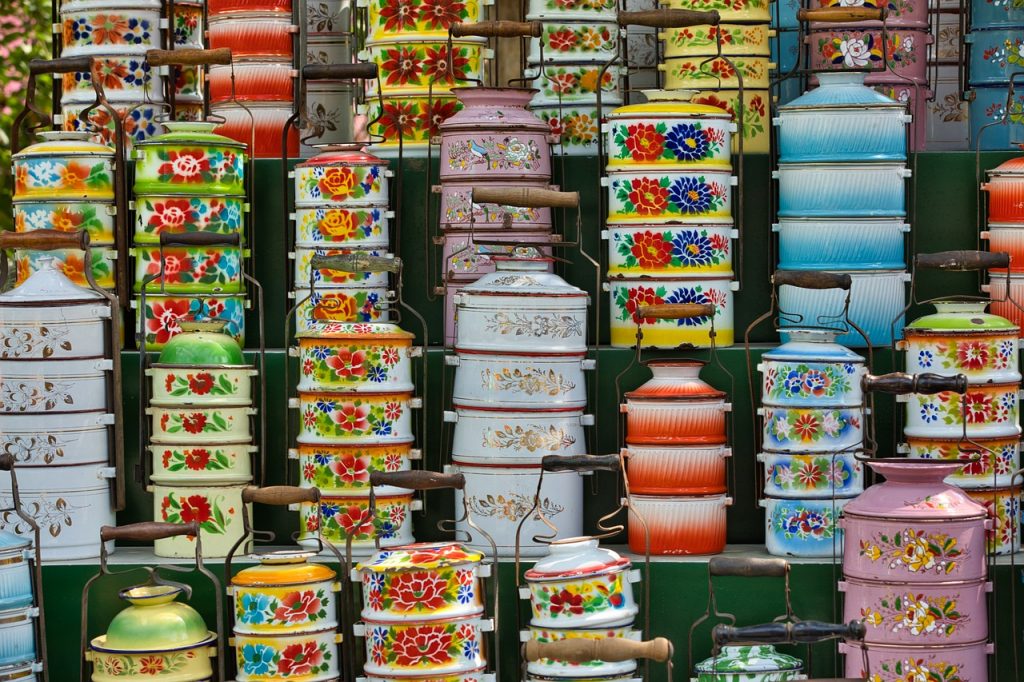Are you looking to add a touch of beauty and color to your garden? Look no further than anemones! These stunning flowers come in a variety of types and colors, making them a perfect choice for any garden style and preference.
From classic favorites to unique and rare varieties, there is an anemone out there that will suit your garden perfectly. Whether you prefer elegant blooms or vibrant and showy flowers, there is something for everyone.
With their delicate petals and eye-catching colors, anemones are sure to make a statement in your garden. Whether you want to create a serene and peaceful atmosphere or a bold and dramatic display, anemones can help you achieve your desired look.
Let’s explore some of the top anemone varieties that will add beauty and color to your garden.
1. Japanese Anemone
The Japanese anemone is a highly sought-after flower among gardeners due to its elegant blooms and long blooming period. With its graceful petals and vibrant colors, it adds a touch of beauty and sophistication to any garden. This popular choice comes in various varieties, each with its own unique characteristics and growing requirements.
When it comes to caring for Japanese anemones, it’s important to provide them with the right conditions to thrive. These flowers prefer well-draining soil and partial shade, although they can tolerate full sun in cooler climates. Regular watering is essential, especially during dry periods, to keep the soil moist but not waterlogged.
To ensure the health and longevity of your Japanese anemones, it’s recommended to divide them every three to four years. This helps prevent overcrowding and promotes better growth. Additionally, deadheading the spent blooms encourages continuous flowering throughout the season.
Here are some popular varieties of Japanese anemones:
| Variety | Description |
|---|---|
| Honorine Jobert | This variety features pure white flowers with yellow centers. It blooms from late summer to early fall and grows up to 3 feet tall. |
| September Charm | With its soft pink petals and golden stamens, September Charm is a favorite among gardeners. It reaches a height of 2-3 feet and blooms from late summer to early fall. |
| Whirlwind | Whirlwind is known for its semi-double white flowers and yellow centers. It has a compact growth habit, making it ideal for smaller gardens. |
With proper care and the right variety selection, Japanese anemones can be a stunning addition to your garden. Their long-lasting blooms and graceful presence will surely captivate both you and your visitors.
2. Wood Anemone
The delicate and dainty wood anemone is perfect for woodland gardens. Its graceful blooms and delicate foliage add a touch of elegance to any garden setting. With its enchanting beauty, the wood anemone creates a natural and whimsical atmosphere that is sure to captivate both visitors and wildlife alike.
To create a stunning display with the wood anemone, it’s important to consider its growing requirements. These charming flowers prefer partial shade or dappled sunlight, making them ideal for woodland gardens where tall trees provide filtered light. They also thrive in moist, well-drained soil with plenty of organic matter.
When planting wood anemones, it’s best to choose a location with rich, loamy soil and good drainage. Dig a small hole and place the tuberous root in the ground, making sure to cover it with a thin layer of soil. Water the plant thoroughly after planting to help it establish its roots.
Wood anemones can be planted in clusters or scattered throughout the garden to create a natural and enchanting display. Their delicate flowers come in various shades of white, pink, and purple, adding a pop of color to the woodland landscape.
To enhance the beauty of the wood anemone, consider pairing it with other shade-loving plants such as ferns, hostas, and bleeding hearts. These combinations will create a harmonious and visually appealing garden design.
Overall, the wood anemone is a delightful addition to any garden, particularly woodland gardens. Its delicate blooms and natural charm bring a touch of magic to the landscape, creating a serene and enchanting atmosphere. By following the proper planting and care techniques, you can enjoy the beauty of wood anemones in your own garden.
2.1. Pink Wood Anemone
Add a touch of pink to your garden with the pink wood anemone. This delicate flower is known for its vibrant pink petals that add a pop of color to any garden. The pink wood anemone is a unique variety that stands out among other flowers with its distinct beauty.
When incorporating the pink wood anemone into your garden design, consider its unique characteristics. This flower thrives in shady areas, making it perfect for woodland gardens or under the canopy of trees. Its dainty blooms create a natural and enchanting display that adds a touch of whimsy to any landscape.
To successfully incorporate the pink wood anemone into your garden, provide it with well-drained soil and partial shade. This flower prefers moist conditions, so regular watering is essential. Plant them in groups for a stunning visual impact, or mix them with other shade-loving plants for a diverse and colorful garden.
With its delicate pink petals and charming presence, the pink wood anemone is sure to be a standout in your garden. Embrace its unique characteristics and let it add a touch of elegance and beauty to your garden design.
2.2. White Wood Anemone
2.2. White Wood Anemone
Create a serene and peaceful atmosphere in your garden with the white wood anemone. This delicate flower is known for its elegant white blooms that add a touch of beauty to any garden setting. The white wood anemone is a versatile plant that can be used in various garden styles and settings.
To successfully grow the white wood anemone, it is important to provide it with the right growing conditions. This flower thrives in partial shade or dappled sunlight, making it ideal for woodland gardens or areas with filtered light. Ensure that the soil is well-draining and rich in organic matter to promote healthy growth.
In terms of garden settings, the white wood anemone can be used in a variety of ways. It looks stunning when planted in mass groupings, creating a carpet of white flowers that brighten up shady areas. You can also incorporate it into mixed borders or rock gardens for a natural and enchanting display.
Consider pairing the white wood anemone with other shade-loving plants such as ferns, hostas, or bleeding hearts to create a harmonious and visually appealing garden. The contrast between the white blooms and the lush green foliage of these plants will create a striking effect.
Whether you want to create a peaceful retreat or add a touch of elegance to your garden, the white wood anemone is a perfect choice. Its graceful beauty and versatility make it a valuable addition to any garden.
3. Poppy Anemone
The vibrant and showy poppy anemone is sure to catch everyone’s attention. This stunning flower comes in a variety of colors, ranging from bold reds to soft pinks and purples. Its vibrant hues make it a standout choice for any garden.
When it comes to cultivating poppy anemones, there are a few tips to keep in mind. These flowers thrive in well-draining soil and prefer full sun or partial shade. They should be planted in the fall, as they require a period of cold dormancy to bloom successfully in the spring.
To ensure successful cultivation, it’s important to provide adequate water and regular fertilization. Mulching around the plants can help retain moisture and suppress weed growth. Deadheading spent blooms will encourage continuous flowering throughout the season.
Whether you choose the striking red poppy anemone or the elegant purple variety, these showy flowers are sure to add a pop of color and beauty to your garden. Experiment with different color combinations and create a stunning display that will be the envy of your neighbors.
3.1. Red Poppy Anemone
Make a bold statement in your garden with the striking red poppy anemone. This vibrant flower is sure to catch the eye of anyone who passes by. With its bold red petals and contrasting dark centers, the red poppy anemone adds a touch of drama and elegance to any garden.
To create a dramatic display with the red poppy anemone, consider planting them in clusters or drifts. This will create a stunning visual impact and make the flowers stand out even more. You can also pair them with other flowers in complementary colors, such as white or purple, to create a beautiful contrast.
When it comes to caring for red poppy anemones, they prefer well-drained soil and full sun to partial shade. Make sure to water them regularly, especially during dry spells, to keep the soil moist. Deadhead the flowers as they fade to encourage new blooms and prolong the flowering period.
If you want to add a touch of drama and boldness to your garden, the red poppy anemone is the perfect choice. Its vibrant color and eye-catching beauty will make your garden the envy of all your neighbors.
3.2. Purple Poppy Anemone
The purple poppy anemone is a stunning addition to any garden, adding a touch of elegance and regal beauty. With its rich purple color, this flower stands out and creates a captivating display. Incorporating the purple poppy anemone into your landscape design is easy and can enhance the overall aesthetic of your garden.
To incorporate the purple poppy anemone into your landscape design, consider the following tips:
- Choose the right location: The purple poppy anemone thrives in well-drained soil and prefers partial shade. Find a spot in your garden that meets these requirements.
- Planting: Dig a hole that is slightly larger than the root ball of the plant. Place the purple poppy anemone in the hole and cover the roots with soil. Water thoroughly after planting.
- Companion plants: Pair the purple poppy anemone with other flowers that complement its color and height. Consider planting it alongside white flowers or contrasting colors to create a visually appealing display.
- Maintenance: The purple poppy anemone is a low-maintenance flower. Water it regularly, especially during dry spells, and remove any weeds that may compete for nutrients.
- Propagation: If you want to expand your purple poppy anemone collection, you can propagate them through division. Dig up the plant in early spring or fall, separate the rhizomes, and replant them in new locations.
By incorporating the purple poppy anemone into your landscape design, you can add a touch of elegance and create a visually stunning garden. Its rich purple color and regal beauty will surely impress anyone who sees it.
4. Windflower
The windflower, also known as anemone blanda, is a charming and low-maintenance option for your garden. These delicate flowers come in a variety of colors, adding a touch of beauty and elegance to any landscape. From vibrant blues to soft pinks, windflowers offer a wide range of color options to suit your preferences.
Growing windflowers successfully is relatively easy, making them a popular choice for both experienced and novice gardeners. These resilient plants thrive in well-draining soil and prefer partial shade, making them ideal for areas with dappled sunlight. They can be planted in the spring or fall, and once established, they require minimal maintenance.
To grow windflowers, start by preparing the soil by loosening it and removing any weeds or debris. Plant the bulbs about 2-3 inches deep and 3-4 inches apart, ensuring that the pointed end faces upwards. Water the bulbs thoroughly after planting and continue to water them regularly, keeping the soil evenly moist but not waterlogged.
Windflowers can be grown in borders, rock gardens, or containers, adding a pop of color and charm to any space. They also make excellent cut flowers, bringing their beauty indoors. With their vibrant colors and low-maintenance nature, windflowers are a wonderful addition to any garden.
4.1. Blue Windflower
Bring a splash of blue to your garden with the beautiful blue windflower. This delicate flower is sure to add a touch of elegance and charm to any landscape. The blue windflower, also known as Anemone blanda, is a low-growing perennial that produces dainty blue flowers in early spring. Its vibrant color and delicate petals make it a standout in any garden.
To care for the blue windflower, it is important to provide it with the right growing conditions. This flower thrives in well-draining soil and prefers partial shade to full sun. It is also important to keep the soil moist but not waterlogged, as the blue windflower does not tolerate soggy conditions.
To create a stunning display with the blue windflower, consider planting it in mass plantings or alongside other spring-blooming bulbs. Its vibrant blue color pairs well with yellow daffodils or white snowdrops. You can also plant it in rock gardens or containers for a pop of color.
Overall, the blue windflower is a beautiful addition to any garden. Its stunning blue blooms and delicate nature make it a standout choice for gardeners looking to add a touch of elegance to their outdoor space.
4.2. Pink Windflower
Add a touch of romance to your garden with the pink windflower. This delicate flower is sure to bring beauty and charm to any landscape. Whether you have a small backyard garden or a sprawling estate, the pink windflower can be incorporated seamlessly into your design.
One way to showcase the delicate beauty of the pink windflower is by planting it in clusters or drifts. This creates a stunning visual impact and allows the flowers to shine. Consider planting them alongside other spring-blooming bulbs or in front of taller plants to create depth and dimension in your garden.
The pink windflower also pairs well with other pastel-colored flowers, such as tulips or daffodils. The soft hues create a romantic and dreamy atmosphere in your garden. You can also use the pink windflower as a border plant or in rock gardens for a touch of whimsy.
When it comes to care, the pink windflower is relatively low-maintenance. It prefers well-draining soil and partial shade, making it a versatile choice for various garden settings. Ensure that the soil is moist but not waterlogged, and provide regular watering during dry spells.
As the pink windflower blooms in the spring, it adds a burst of color and freshness to your garden after a long winter. Its delicate petals and graceful stems create a sense of tranquility and beauty. Incorporate this lovely flower into your landscape and enjoy the romantic ambiance it brings.
5. Alpine Anemone
If you have a rock garden or alpine setting, the alpine anemone is a perfect choice. These petite flowers have unique characteristics that make them stand out in any garden. Their delicate blooms and vibrant colors add a touch of charm and beauty to your outdoor space.
One of the key features of the alpine anemone is its adaptability to rocky and mountainous environments. They thrive in well-drained soil and can withstand harsh conditions, making them ideal for alpine gardens. These resilient flowers can endure cold temperatures and even snow, providing a splash of color when other plants are dormant.
To create a captivating display with alpine anemones, consider planting them in clusters or drifts. This will create a natural and eye-catching effect. You can also combine them with other alpine plants and rock features to enhance the overall aesthetic of your garden.
When it comes to color options, alpine anemones offer a variety of choices. From vibrant yellows to soft pinks and purples, you can create a stunning contrast in your landscape. Consider using different colors to create a focal point or to complement the surrounding plants.
Overall, the alpine anemone is a versatile and beautiful addition to any rock garden or alpine setting. Its unique characteristics and captivating display make it a perfect choice for those looking to add a touch of charm and elegance to their outdoor space.
5.1. Yellow Alpine Anemone
Brighten up your garden with the cheerful yellow alpine anemone. This vibrant flower is sure to add a pop of color to any landscape. The yellow alpine anemone is a low-growing perennial that thrives in alpine settings and rock gardens. Its delicate blooms and bright yellow petals create a stunning contrast against the greenery of your garden.
To successfully grow the yellow alpine anemone, it’s important to provide it with the right growing conditions. This flower prefers well-draining soil and full sun to partial shade. Make sure to plant it in an area that receives at least 6 hours of sunlight per day. Additionally, the yellow alpine anemone requires regular watering, especially during dry periods. Keep the soil evenly moist but not waterlogged.
When it comes to using the yellow alpine anemone in your landscape, there are several options. You can plant it in clusters or drifts to create a bold statement. Alternatively, you can mix it with other low-growing plants to add a touch of color and texture. The yellow blooms of the alpine anemone also make it a great choice for cut flower arrangements.
In conclusion, the yellow alpine anemone is a stunning flower that can brighten up any garden. Its cheerful yellow petals and low-maintenance nature make it a popular choice among gardeners. By providing it with the right growing conditions and incorporating it into your landscape design, you can create a stunning contrast and add a vibrant touch to your garden.
Frequently Asked Questions
- Q: What are the best anemone varieties for my garden?
- Q: How do I care for Japanese anemones?
- Q: Can I grow wood anemones in a woodland garden?
- Q: What are the different colors of poppy anemones?
- Q: How can I grow windflowers successfully?
- Q: Are alpine anemones suitable for rock gardens?
A: The best anemone varieties for your garden depend on your preferences and garden style. Some popular choices include the Japanese anemone, wood anemone, poppy anemone, windflower, and alpine anemone. Each variety offers unique characteristics and colors to enhance the beauty of your garden.
A: Japanese anemones require well-drained soil and partial shade. They should be watered regularly, especially during dry periods. Deadheading spent blooms and dividing the plants every few years will help promote healthy growth and abundant flowering.
A: Absolutely! Wood anemones are perfect for woodland gardens. They thrive in moist, shady areas and create a natural and enchanting display. Plant them in clusters to achieve a beautiful carpet-like effect.
A: Poppy anemones come in a range of stunning colors, including red, purple, and various shades of pink. These vibrant and showy flowers are sure to add a pop of color to your garden.
A: Windflowers, also known as anemone blanda, are low-maintenance plants. They prefer well-drained soil and full sun to partial shade. Plant the bulbs in the fall, and they will reward you with beautiful blooms in the spring.
A: Yes, alpine anemones are a perfect choice for rock gardens or alpine settings. These petite flowers add charm to any landscape and can withstand harsh conditions. Plant them in well-drained soil and provide them with enough sunlight.



